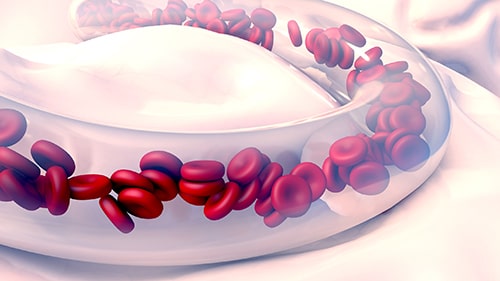Capillary Arteriovenous Malformation (Cap-AVM) Syndrome

Capillary arteriovenous malformation syndrome (Cap-AVM) is a genetic syndrome caused by variants in the RASA1 (p120-RAS GAP) gene. The incidence is one in 100,000 individuals. The feature that defines Cap-AVM is abnormal blood vessels (capillaries) in the skin that may appear as small red spots in the skin. Individuals may also develop arteriovenous malformations, which are abnormal connections between the veins, arteries and capillaries. These malformations can cause a number of different health problems depending on their location. Patients with Cap-AVM may also have a higher risk of developing cancer.
What are some of the features and symptoms of Capillary Arteriovenous Malformation Syndrome?
- Capillary malformations
- Abnormal bleeding
- Headaches
- Seizures
- Limb overgrowth
- Heart failure
What is the age at diagnosis of Capillary Arteriovenous Malformation Syndrome?
The age at diagnosis varies. It occurs when clinical features appear and testing is done to confirm the diagnosis.
How is Capillary Arteriovenous Malformation Syndrome treated?
Treatment is focused on the specific symptoms and may involve a team of doctors with different specialties like dermatology, orthopedics and cardiology.
What types of cancer are individuals with Capillary Arteriovenous Malformation Syndrome at higher risk of developing?
- Skin cancer
- Lung cancer has been reported
- More research is needed to learn about cancers in patients with Cap-AVM.